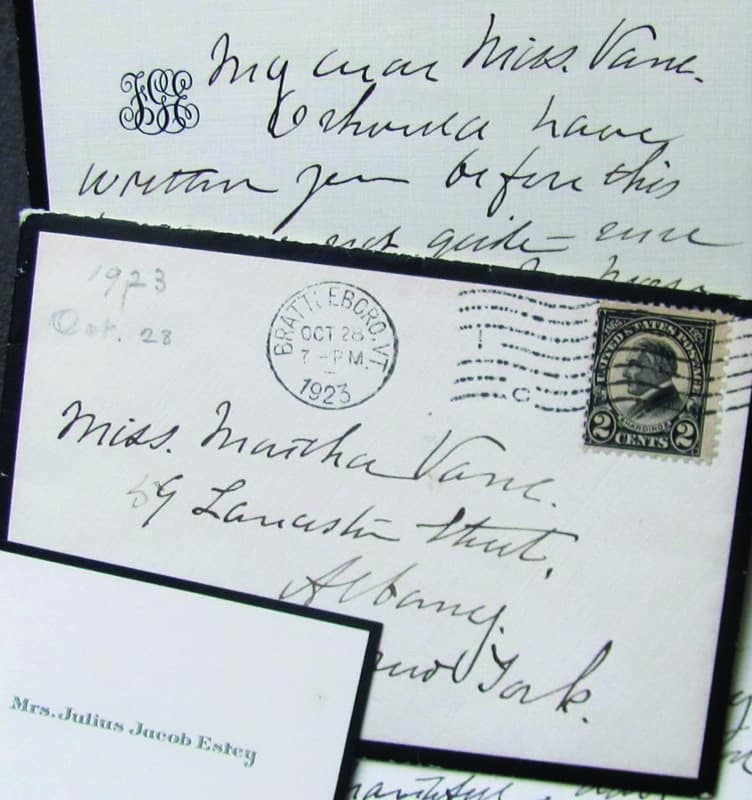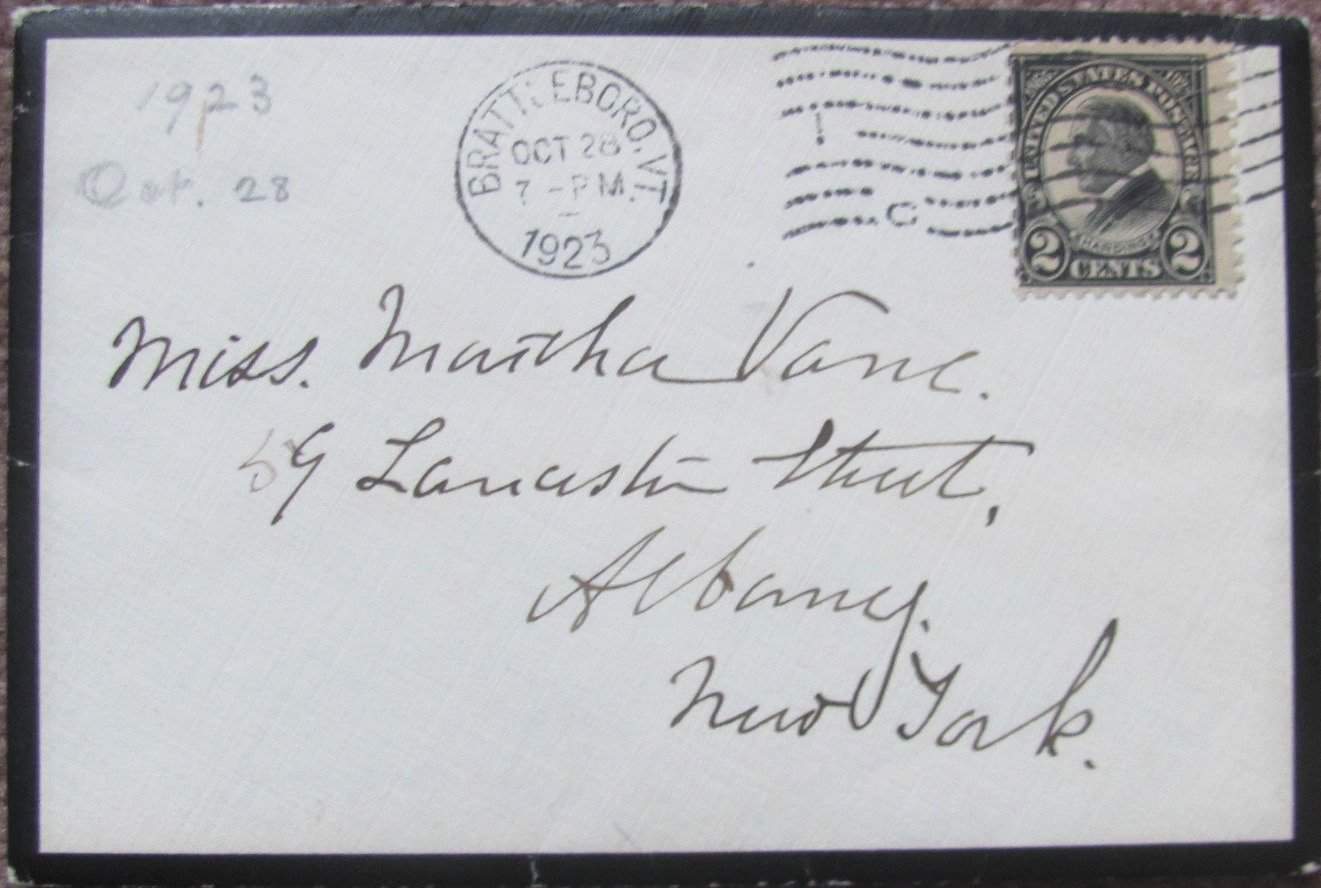
An interesting category of ephemera to collect is mourning covers. What we call envelopes today, are known as “covers” in the trade. The mourning cover with this article is 1923.
In the old days, communication as we know it today didn’t exist. I think a little background is needed.
In the early 1970s, I met a few old Vermonters living out in the country, who still didn’t have electricity. By 1923, most people living in our villages and towns had electricity, with many having a phone. However, many people who lived out in the country were yet to have electricity or a phone. This might be difficult to understand today. I think it’s important for us to know how we communicated. It helps us better understand the lives of men and women of this time.
U.S. mail was the way we kept in touch. Try to imagine these times. You go out to your mailbox to retrieve your mail. In your mailbox you find a cover with black borders on the front. You turn it over and the flap edges of the cover are also trimmed in black.
You are stopped in your tracks. You know this black trimmed cover announces someone close to you has died.
This might seem odd to us today. But these mourning covers prepared the recipient for bad news.
I can only speak from my own experience. Most of the covers I have seen date to the last half of the 19th century. The 1923 cover you see here is the latest I recall seeing. Again, this is just my experience.
Warren Harding
Warren Harding was our 29th President. He began his term on March 4, 1921. Returning from a voyage to Alaska, he died of a heart attack in San Francisco, on Aug. 2, 1923. This ushered in Calvin Coolidge as the 30th President.
Harding mourning stamp
I remember being at Chester Junior High School when President Kennedy was assassinated. I was young, and I didn’t really understand, but all of a sudden our world was turned upside down. In 1964 the U.S. Mint introduced the Kennedy half-dollar.
Likewise, the United States Post Office introduced a Mourning Stamp for President Harding in 1923. The first printing of these two-cent mourning stamps was 300 million stamps. They were released Sept. 1, 1923, a month after Harding’s death.
Selling out quickly, USPD quickly printed other versions. These black mourning stamps, like the 1964 Kennedy half-dollar, were popular with the public.

Estey mourning cover
The mourning cover with this article is postmarked Brattleboro, Oct. 28, 1923. It is fitting that a mourning cover would have a Harding mourning stamp.
It is addressed to: “Miss Martha Vane, 59 Lancaster Street, Albany, N.Y.” Inside is a notecard, also trimmed in black with a handwritten message from Florence Gray Estey. Also included and trimmed in black is a calling card from Mrs. Julius Jacob Estey, Brattleboro, Vt. On the reverse is this handwritten message: “Your kind expression of sympathy is deeply appreciated.”
I asked Danny Clemons to check Brattleboro cemeteries for me. He found 37 Esteys buried in Brattleboro. Of course, many of these are of the Estey Organ Company family. Not knowing who died, I asked Danny to see if he could find an Estey who died in 1923. This is what Danny found:
“I found one Estey that died in 1923, Martha Estey. Birth not listed, died September 1923. She was daughter of Joseph and Alice Low Estey. Florence Gray Estey was born Aug. 28, 1848. She died January 1933.”
I have no doubt this Martha Estey is the deceased in the mourning card. The notecard does not mention the deceased by name.
Looking the cover over closely, I found a blind stamp on the reverse of the cover, under the flap. It reads: “Tiffany & Co. Makers New York.”
Tiffany covers would have been expensive to purchase. The Estey family certainly could have afforded them.
I’m sure there are more than a few readers who have a shoebox full of old letters and covers. You are not alone.
After 16 years, I have retired as president of Chester Historical Society. It was a fun ride, but it is time for a new and younger president. Jon Clark is our new president. I have no doubt Jon will find his way. He’s a Chester boy.
This week’s old saying: “Never be bullied into silence and never allow yourself to be made a victim.”